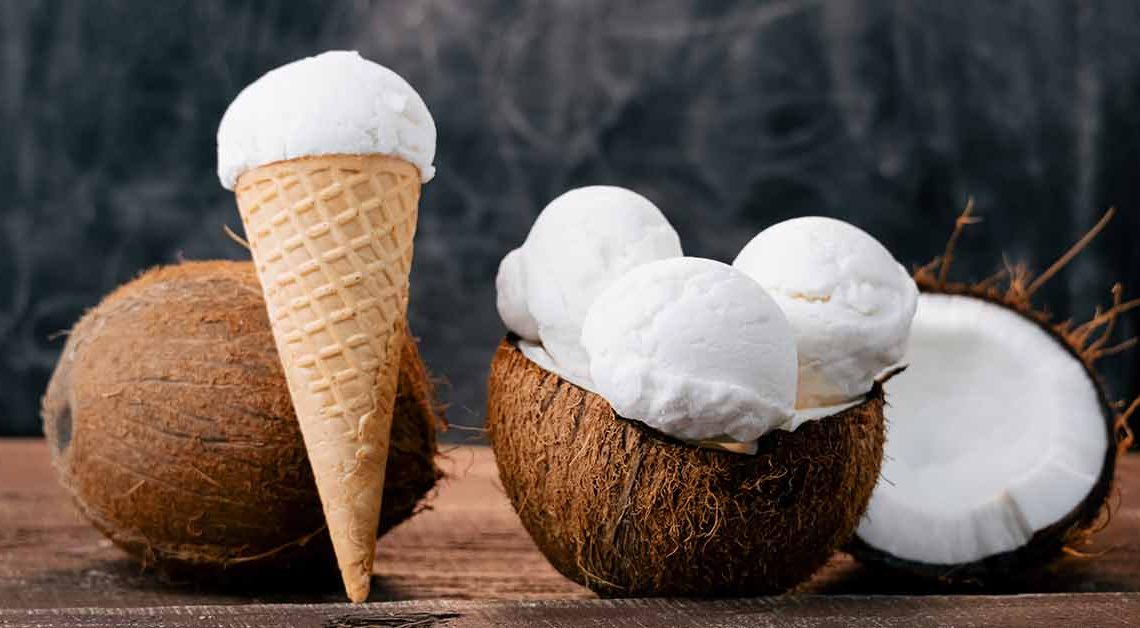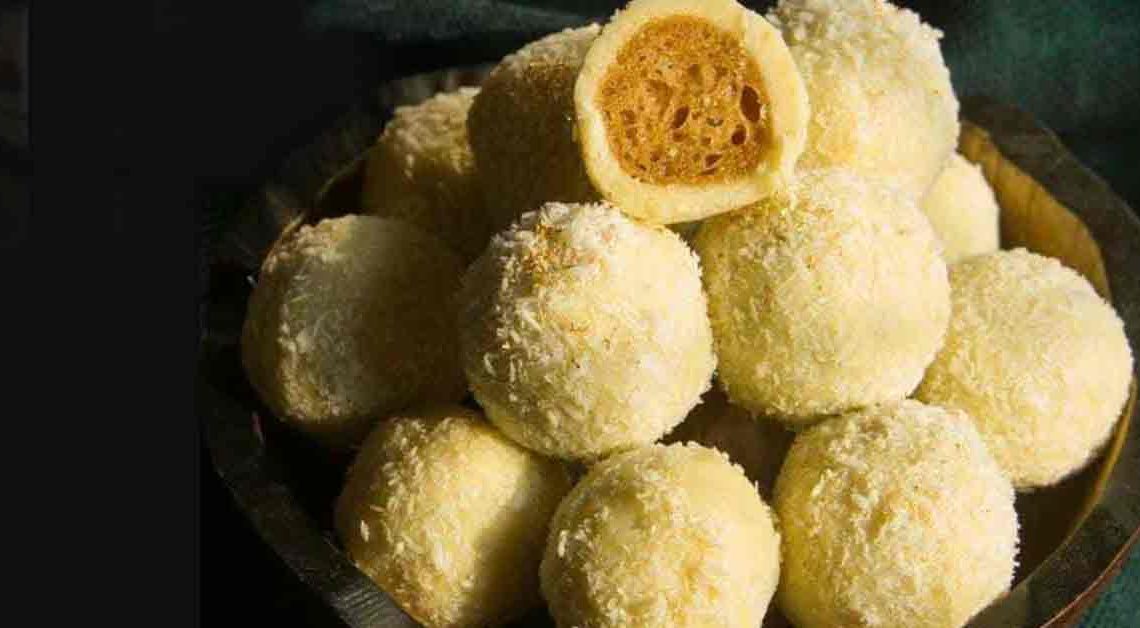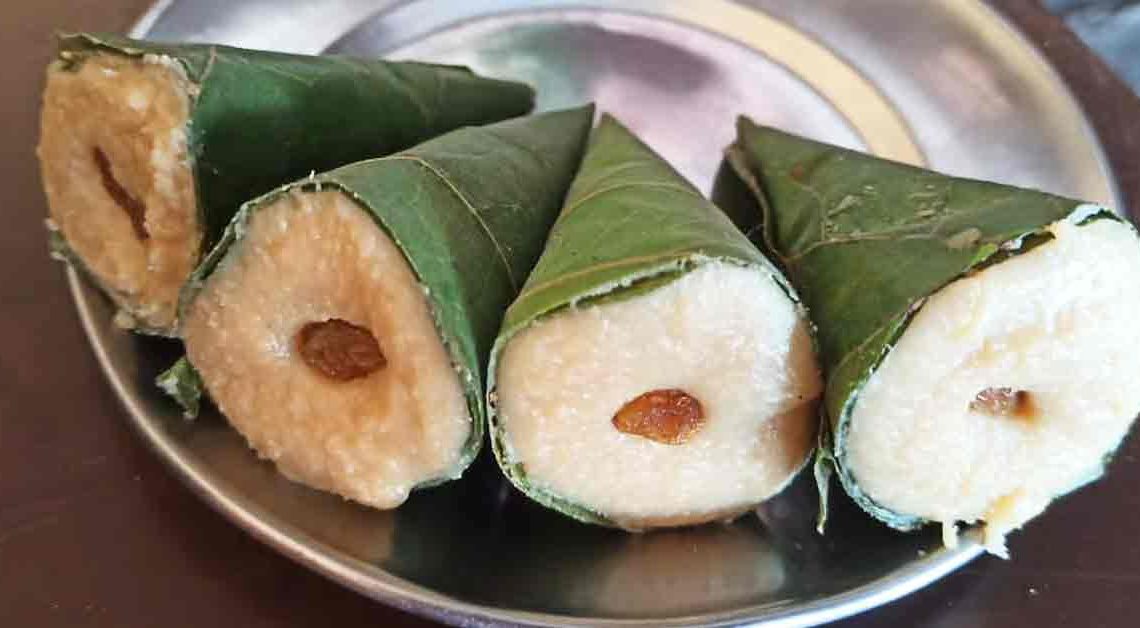Creamy Coconut Ice Cream: An Easy & Delicious Summertime Treat

Eating coconut ice cream is like taking a bite out of a tropical paradise. It’s creamy and smooth, with just the right amount of sweetness. Every spoonful of coconut is an indulgent treat that will make you feel like you’re on a beach in the Caribbean, Taking in the sun and the sights. It is a heavenly treat that can transport your taste buds to a sweet, blissful place and let’s not forget how great it tastes with an umbrella on top!
But wait, there’s more! Not only is it a delectable indulgence, but it also caters to various dietary preferences. Vegans, lactose-intolerant individuals, and those with a dairy-free lifestyle can rejoice, for it offers a creamy alternative that doesn’t compromise on taste.
Coconut, with its exotic allure and rich flavor, serves as the star ingredient in our frozen creations. We delve into the captivating history and cultural significance of coconuts, transporting you to tropical islands where this versatile fruit has long been cherished.
Let’s dive into a world of coconut-infused delights that will transport your taste buds to the pleasing shores of flavor paradise. Welcome to our coconut ice cream haven!
Origin Of Coconut Ice Cream
The origin of coconut ice cream can be traced back to the tropical regions where coconuts are abundant and have been a culinary staple for centuries. While the exact origins are unclear, it is believed that this frozen treat originated in Southeast Asia, specifically in countries like Thailand and the Philippines, where coconuts are widely grown and used in various dishes.
In these regions, coconut milk and coconut cream have long been essential ingredients in traditional desserts and sweet treats. The idea of transforming the creamy goodness of coconuts into a frozen delight was a natural progression. The lush tropical climate, with its abundance of coconuts, provided the perfect setting for the creation of dairy-free and vegan-friendly treats.
Over time, the popularity spread beyond its places of origin. With the rise of global travel and the growing appreciation for exotic flavors, gained recognition in international culinary scenes. It became a sought-after dessert in countries around the world, offering a refreshing and tropical twist to the traditional repertoire of frozen treats.
History Of Coconut Ice Cream
The history of coconut ice cream can be traced back to the tropical regions of Southeast Asia, where coconuts have been a significant part of the culinary culture for centuries. The exact origins and specific timeline of ice cream’s development are difficult to pinpoint, as it evolved gradually over time.
Coconuts have been a vital ingredient in various Southeast Asian desserts and sweet dishes, with coconut milk and coconut cream featuring prominently in recipes. As the desire for frozen desserts grew, it was only natural to experiment with incorporating the luscious flavors of coconuts into ice cream.
Thailand is often credited as one of the early pioneers in the creation of ice cream. Thai-style coconut ice cream typically involves blending coconut milk, sugar, and other flavorings before freezing the mixture. It is traditionally served in a coconut shell or a cup, topped with various garnishes such as peanuts, sweet corn, or sticky rice.
The popularity gradually spread beyond Thailand, reaching other countries in Southeast Asia, including the Philippines, Indonesia, and Malaysia. Each region added its own unique twists and variations, incorporating local ingredients and flavors to create diverse renditions of vegan-free frozen treats.
In recent years, it has gained international recognition and popularity, thanks to the growing demand for dairy-free and vegan-friendly alternatives. Today, it continues to evolve, with innovative recipes featuring ingredients like coconut flakes, toasted coconut, and even infusions with spices or tropical fruits. It remains a delightful and sought-after treat, reminding us of the rich culinary heritage and the tropical allure of coconuts.
Cultural Significance Of Coconut Ice Cream
Coconut ice cream holds cultural significance in various regions where coconuts are a cherished part of the culinary and cultural heritage. Here are some aspects of its cultural significance:
Tropical Symbolism: It embodies the essence of tropical regions. It evokes images of palm-fringed beaches, exotic flavors, and the laid-back lifestyle associated with tropical destinations.
Festivals and Celebrations: In some cultures, ice cream plays a role in festive occasions and celebrations. It may be served during religious festivals, weddings, or other significant events, adding a touch of sweetness and delight to the festivities.
Vegan and Dairy-Free Alternatives: It holds cultural significance for individuals who follow vegan or dairy-free diets. It has become a popular choice as a plant-based alternative to traditional dairy ice cream, aligning with cultural values of compassion.
Where Is Coconut Ice Cream Famous?
India: “Land of Coconuts,” Kerala in South India is famous for its coconut-based dishes and desserts. It is widely enjoyed in Kerala, Goa, Tamil Nadu, Maharashtra with its creamy texture and tropical flavors being a favorite among locals and tourists.
Southeast Asia: It has deep roots in Southeast Asia, where coconuts are abundant. Countries such as Thailand, the Philippines, Indonesia, and Malaysia are known for their rich coconut-based desserts, including ice cream. Thai-style ice cream, in particular, is renowned for its creamy texture and vibrant flavors.
Australia and New Zealand: With their love for tropical flavors, it has found a dedicated following in Australia and New Zealand. The creamy and refreshing nature of frozen ice cream resonates with the locals, especially during the warmer months.
Interesting Facts And Trivia Related To Coconut Ice Cream
Certainly! Here are some interesting facts and trivia related to coconut ice cream:
- It is a popular choice for individuals who follow a dairy-free or vegan lifestyle. It serves as a creamy and delicious alternative to traditional dairy-based ice creams, making it suitable for those with lactose intolerance or dietary restrictions.
- It typically uses either coconut cream or coconut milk as a base ingredient. Coconut cream is thicker and richer, while coconut milk is slightly lighter. The choice of using one over the other can impact the texture and richness of the ice cream.
- This treat captures the tropical essence with its rich coconut flavor. It provides a taste of the tropics, evoking images of palm trees, sandy beaches, and refreshing ocean breezes.
- As it offers a canvas for creativity, allowing for unique flavor combinations and toppings. From adding chunks of fresh fruit like mango or pineapple to mixing in chocolate chips or toasted coconut flakes, the possibilities for flavor experimentation are endless.
- It holds cultural significance in regions where coconuts are a staple ingredient. It represents the culinary heritage of tropical countries.
- While it is still a dessert, it can offer some health benefits. Coconuts contain healthy fats, vitamins, and minerals, and ice cream can provide a source of medium-chain fatty acids, which are known for their potential health benefits.
- Homemade ice cream allows for customization and control over ingredients. Many enthusiasts enjoy experimenting with recipes at home, tailoring the sweetness, texture, and flavors to their personal preferences.
- It has gained popularity worldwide, not just in tropical regions. Its refreshing taste and dairy-free nature have made it a hit in countries where coconuts may not naturally grow, extending its reach to ice cream parlors and supermarkets across the globe.
- It is often served in unique ways. It can be presented in a coconut shell, providing an authentic tropical experience. It is also commonly paired with other tropical flavors like mango or served atop sticky rice for a delicious fusion dessert.
- This is particularly popular during the summer months when people crave refreshing and tropical flavors. Its creamy, cool texture offers a delightful respite from the heat, making it a go-to treat for ice cream lovers.







